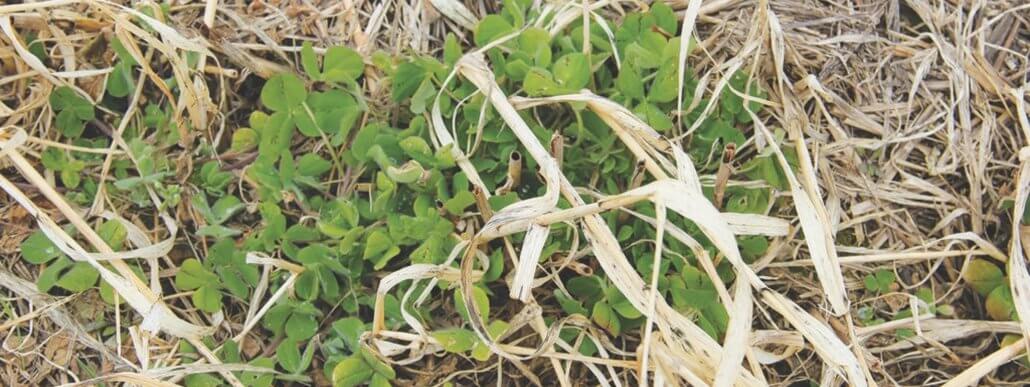Show me a bare soil in nature
In natural systems, it’s very rare to see bare soil. Soils are usually covered by a canopy, and sometimes by a layer of residue. This cover, whether canopy or the residue, protects the soil. It keeps it cool in the summer and a little bit warmer in the winter. It also provides protection from the impact of raindrops or wind, and therefore reduces its erodibility.
Soil cover for microbes
A covered soil is also a fed soil. Plants feed the soil life. They feed the soil microorganisms through root exudates; these are mainly sugars (carbohydrates) that they get through photosynthesis, and through dead residues, which feeds the soil microbes through decomposition. If you find a place where plant litter has been left for a year or two and look underneath that cover, you’ll see an absolutely amazing soil biological diversity.
When nature is disturbed she makes plans to cover up
Now there are times where natural systems are uncovered for a while, maybe through a disturbance event like a flood or fire, but immediately thereafter, the first thing that you’re going to see is the growth of pioneer plants. Mother Nature does not like to be uncovered and so she uses plants to cover her wounds. In agriculture, it is often weeds which cover up bare soil. Soil health expert Ray Archuleta likes to say that weeds are the ambulance workers, or the coatings, of the land, and I couldn’t agree with him more.
The ultimate end goal
Keeping the soil covered is important for soil conservation. The abundance and diversity of food for soil organisms is what determines a soil’s natural productivity. If you increase the soil’s natural productivity, you will reduce synthetic inputs such as fertilisers and herbicides. This directly translates to money in your pocket.
Interesting reading:
- The management of soils with excessive sodium and magnesium levels - 2023-06-12
- Understanding evapotranspiration better - 2021-10-18
- Soil fungi connections - 2021-09-28

